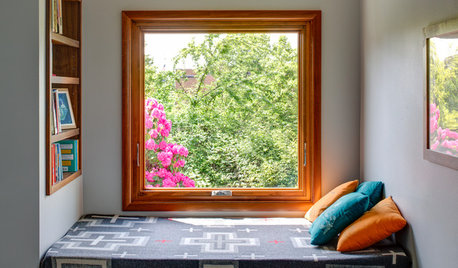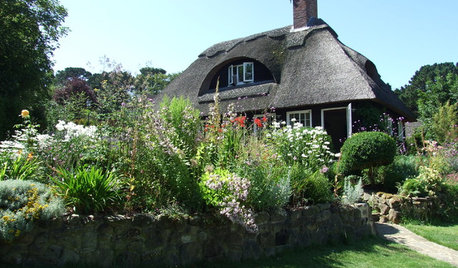Unhappy with pole beans--your suggestions?
marlingardener
14 years ago
Featured Answer
Sort by:Oldest
Comments (30)
sunnibel7 Md 7
14 years agolast modified: 9 years agograndad_2003
14 years agolast modified: 9 years agoRelated Discussions
Harvesting Pole Beans
Comments (14)Personally, I prefer the bush beans to pole beans even though I have to bend over or crawl to pick them. are a vairety called Tendergreen and the big one here borders on being too big, but cooked O.K. The smaller ones in the picture are too small to pick. (move the cursor on the picture, then click the little magnifying glass with the + in it to enlarge picture). I do not like many of the green bean varieties, my wife is the green bean fan in the family. I got on the first picking of my of beans (on the right). That is about 2/3rds of a plastic grocery bag full. My wife put some in the freezer and cooked a pot of beans with new potatoes yesterday. They were good. They are probably ready to pick again today. Pole beans continue to grow and produce longer than bush beans. Enjoy your fresh beans. Bill P....See MoreLeafhoppers on pole beans
Comments (2)jean001a, the Internet suggests otherwise, at least up through the nymph stage...but it seems too late to acquire ladybugs locally, anyway. So...what can I do?...See MoreAsian pole beans (NOT yard-long, hyacinth, winged, etc. etc.)
Comments (3)Thanks for the tips. The Insuk's Wang Kong beans look exactly like the scarlet emperor runner beans (plants, pods and seeds) we have in our garden right now, though the seeds may be a little smaller (haven't let any mature all the way yet). I wonder if the seeds I bought from Territorial are this strain? I'll probably give the agrohaitai beans a try... since no one mentions them here, it will be interesting to report on a new type to others....See MoreKentucky Wonder Pole Beans not producing
Comments (36)Diane, You're welcome. Yes it is fiction but it is based on the drought that hit the Great Plains from approx. 1949 through 1957. During that period of time, rainfall averaged less than 40% of usual and many cattle ranchers were driven out of business. In one year in the 1950s, Lubbock, Texas, recorded no rainfall. So, the conditions were not unlike the Dust Bowl days although by the late 1940s the Soil Conservation Service had put many programs into place that prevented, largely, a repeat of the dust storms of the Dust Bowl years. I believe Mr. Kelton wrote this incredible book to put a human face on the suffering of the Texas ranchers during that time, when many of them were driven out of the cattle business. It was because of the 1950s drought that Texas embarked upon an ambitious program to build reservoirs so they could stockpile water to avoid a recurrence of the Dust Bowl Years and the 1950 Drought years. When you read "The Time It Never Rained", you can just put yourself in Charlie Flagg's shoes and imagine how horrible it was to not even be able to feed your cattle or sheep and, eventually, yourself and your family. For Charlie, there were some things more important than 'saving the ranch at any cost'. He wanted to do things his way and maintain his independence. He didn't want to take a 'handout' from the government and he didn't want the government telling him what to do or how to do it. He just flat didn't want to compromise his own principles. That's part of what makes the book so fascinating---it wasn't just a struggle with nature, but an internal struggle to stay true to what he believed in. I had relatives who farmed and ranched in Texas in the 1950s and 1960s and they thought Elmer Kelton captured the reality on paper so well. "The Time It Never Rained" is a great classic western tale and it is one of the reasons the Western Writers of America named Elmer Kelton the greatest western writer of all time. For as hard as times are now, this novel is just such a chilling representation of one fictional man's life during some incredibly hard times, and that's why I like it. It reminds me how easy we have it much of the time, and it reminds me that when you make your living from the land, it can be a hard life with, perhaps, more downs than ups. Can you tell I love this book? Dawn...See Morecabrita
14 years agolast modified: 9 years agomarlingardener
14 years agolast modified: 9 years agoaloha10
14 years agolast modified: 9 years agoengk916
14 years agolast modified: 9 years agoribbit32004
14 years agolast modified: 9 years agoJXBrown (Sunset 24, N San Diego County)
14 years agolast modified: 9 years agolantanascape
14 years agolast modified: 9 years agoP POD
14 years agolast modified: 9 years agojrslick (North Central Kansas, Zone 5B)
14 years agolast modified: 9 years agocindy_l
14 years agolast modified: 9 years agomarlingardener
14 years agolast modified: 9 years agodiclemeg
14 years agolast modified: 9 years agojackinthecountry
14 years agolast modified: 9 years agotrsinc
14 years agolast modified: 9 years agoDonna
14 years agolast modified: 9 years agomarlingardener
14 years agolast modified: 9 years agosunnibel7 Md 7
14 years agolast modified: 9 years agomarlingardener
14 years agolast modified: 9 years agosunnibel7 Md 7
14 years agolast modified: 9 years agofanny
14 years agolast modified: 9 years agojnfr
14 years agolast modified: 9 years agozeedman Zone 5 Wisconsin
14 years agolast modified: 9 years agomarlingardener
14 years agolast modified: 9 years agodixie-gardener
14 years agolast modified: 9 years agofulton1959_yahoo_com
13 years agolast modified: 9 years agoirelandhouserental
8 years agoirelandhouserental
8 years ago
Related Stories

LIFEHow to Recharge Your Soul During the Change of Seasons
Sit down, breathe deeply and spend a little extra time making your home a place of calming comfort
Full Story
PETSPet-Proofing Your Home: A Room-by-Room Guide
Not all pet dangers are obvious. Keep furry friends safe and sound by handling all of these potential hazards
Full Story
MOST POPULARHow to Get the Closet of Your Dreams
Do you cringe every time you open your closet door? It may be time for a makeover
Full Story
LANDSCAPE DESIGNGreat Design Plant: Retreat to the Shade of Hardy Catalpa
Big foliage and a towering height provide a shady respite in summer, but that's not all hardy catalpa offers dedicated gardeners
Full Story
EDIBLE GARDENSHow to Grow Your Own Sweet Summer Crops
This guide will help any gardener get started on growing the freshest warm-season veggies and berries for summer
Full Story
LANDSCAPE DESIGNSee 5 Unexpected Ways to Use Vines
Vines can grow over slopes, trail off pergolas and add seasonal color to the garden
Full Story
EDIBLE GARDENSGarden BFFs? Why Your Vegetables Are Begging for Companion Plants
Foster friendships among plants for protection from pests, pollination support and color camaraderie
Full Story
LANDSCAPE DESIGNHow to Create a Cottage-Style Garden
If you like an abundance of plants — and visits from birds, bees and butterflies — this may be the style of yard for you
Full Story
GARDENING GUIDES5 Best-Behaved Trees to Grace a Patio
Big enough for shade but small enough for easy care, these amiable trees mind their manners in a modest outdoor space
Full Story
FARM YOUR YARDHow to Build a Raised Bed for Your Veggies and Plants
Whether you’re farming your parking strip or beautifying your backyard, a planting box you make yourself can come in mighty handy
Full Story


fusion_power